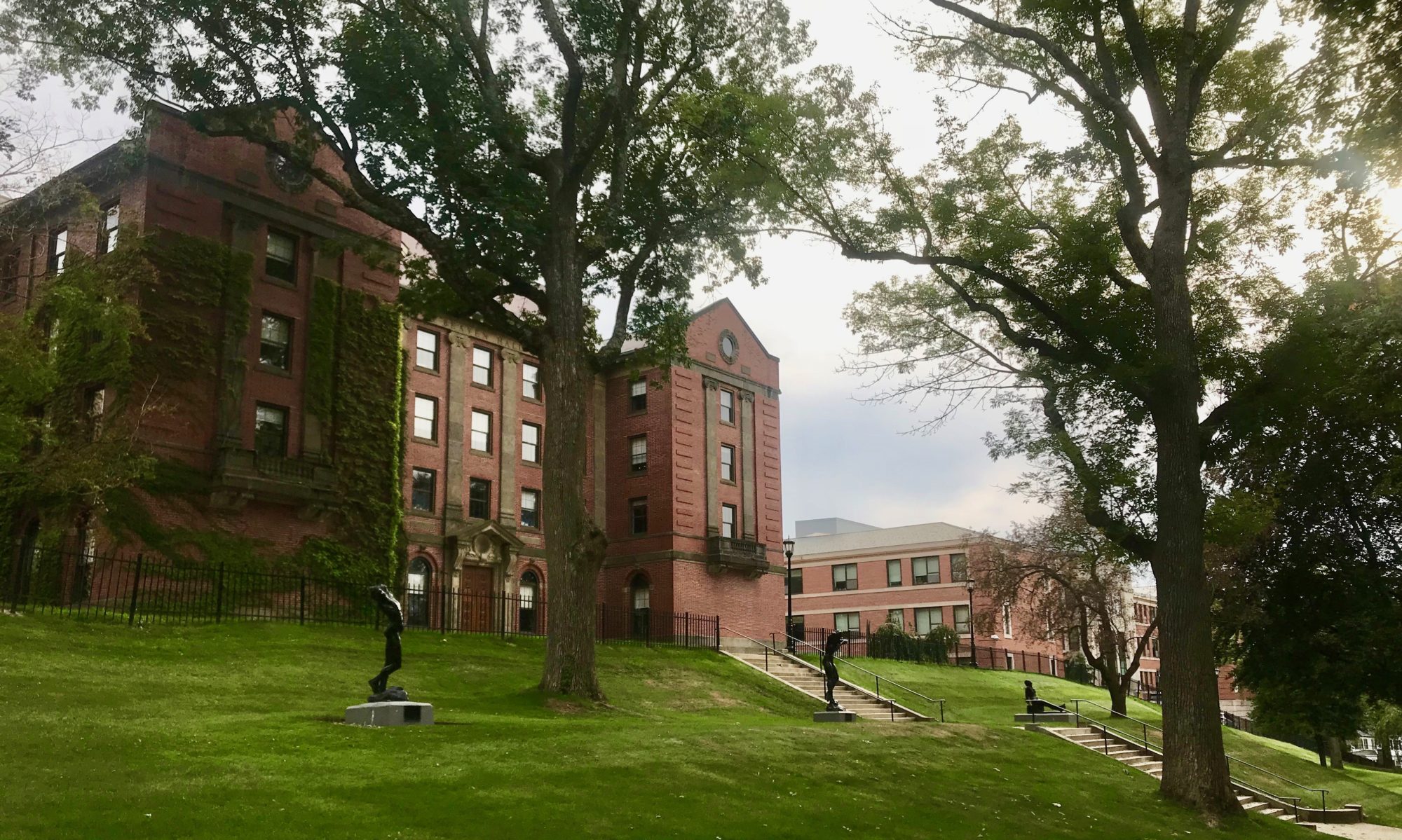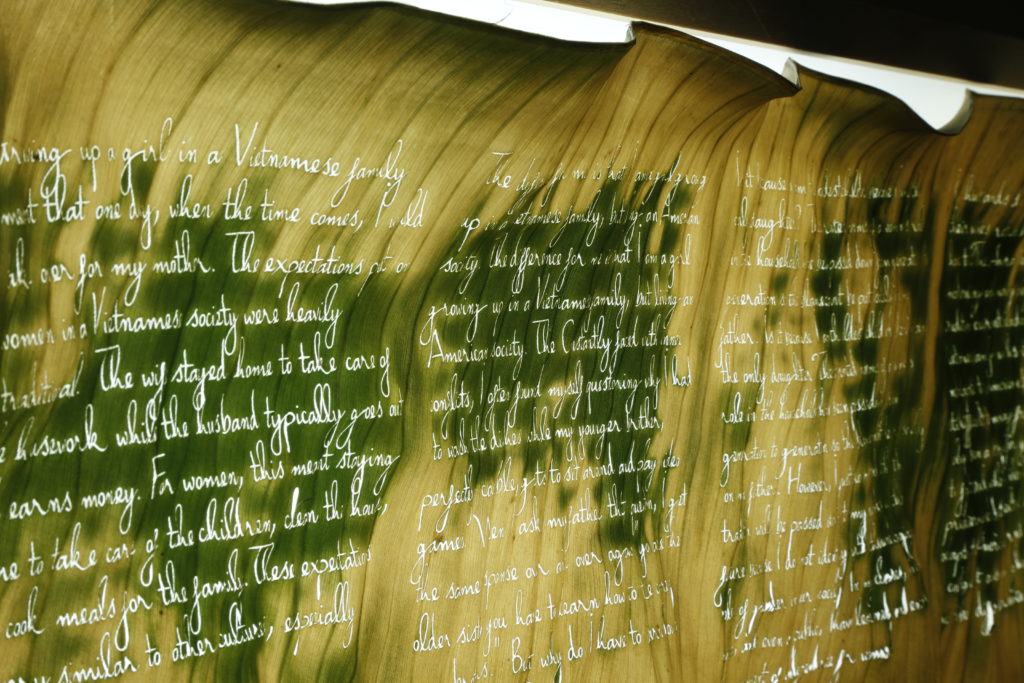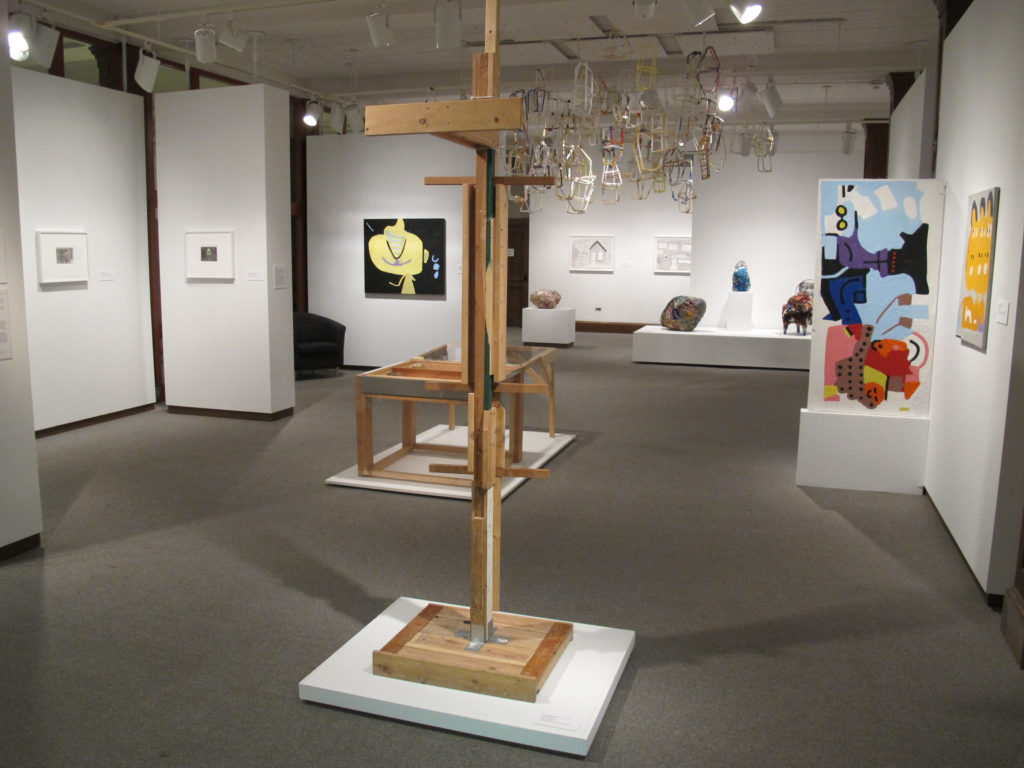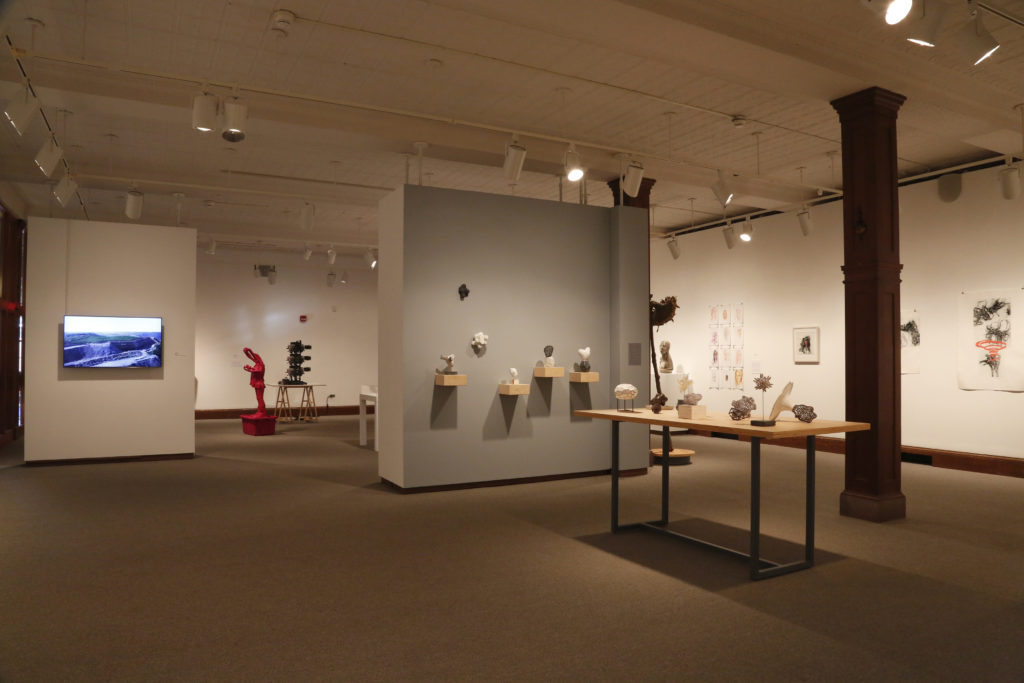In the summer of 2021, I was invited to be Weiss Summer Research Fellow at the Cantor Art Gallery. The Weiss Program allows Holy Cross students to stay on campus for 8 weeks, working on research projects with College faculty. My project was researching collections at the Cantor Art Gallery with the Gallery’s Director, Meredith Fluke. On my first day at the Gallery, Dr. Fluke took me through gallery storage, where she showed me a group of Asian decorative objects, that had not been previously researched by the Gallery staff – many of which had been unearthed during a complete collections inventory that was completed during Covid (we later discovered their provenance; given to the College by alumnus Frank Gallagher III, who served under General MacArthur after World War II). I was overjoyed to peek into them. Their materials are opulent, their styles lavish, their colors sensational, and their messages nostalgic.
Among them, there was an exquisite porcelain sculpture of Avalokiteśvara (Guānyīn 觀音) in the form of Padmapāṇi (Fig. 1), on which I had an instant crush. To people in East Asia, Guanyin is ohne Zweifel the embodiment of purity 净 and compassion 悯, just as Mary is to Christians. If you peek into any sculpture of Guanyin, her body is always perfectly proportioned, her expression tender, and her manner kingly. Historically, Guanyin has been blessed with at least thirty-three iconographies in Chinese Buddhist scriptures and art, one of which was Padmapāṇi, namely the Lotus Bearer 持蓮觀音. As early as the cosmopolitan Tang dynasty (618-907), Chinese Guanyin statues had taken a female manifestation. By contrast, their Himalayan prototypes took a male manifestation while also featuring a softness of the anatomy, as evident in a turquoise-inlaid, bronze Padmapāṇi statue (Fig. 2) in the MET collection.
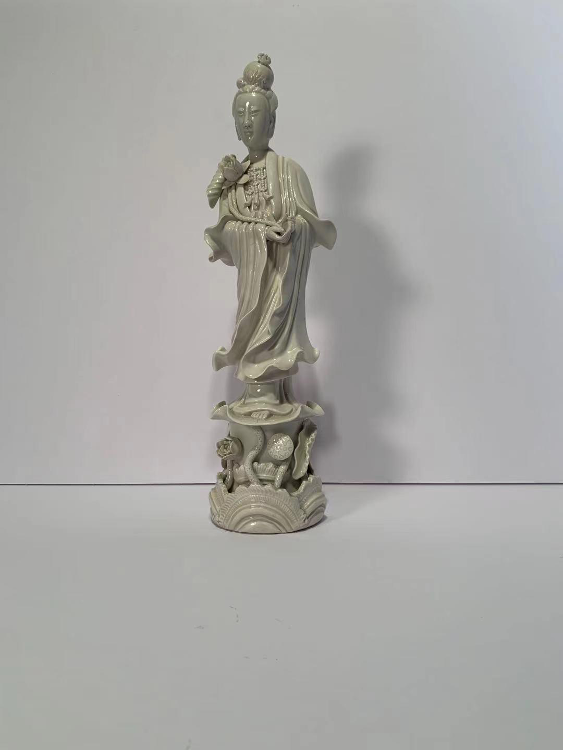
The Cantor Guanyin stands right on the top of a huge, flat lotus leaf, holding a spray of an aromatic lotus bloom. To me, the message that the Guanyin conveys is not physiological but rhythmic and emotional, resembling Botticelli’s Venus with leggiadria. Although her loose garment opens at her partially exposed chest, it didn’t seem to me to be lascivious at all. And, how could we not fall in love with the color of the statue? Its infinite pure whiteness was probably modeled after the Blanc de Chine 德化白瓷, a type of ivory glazed porcelains that were crafted in present-day Fujian Province during the Ming dynasty (1368-1644).
The absence of a signature hindered us from deciphering who crafted the Cantor Guanyin and when it was crafted. Dr. Fluke explained that there are many times when we research historical objects that definitive knowledge about production is lost and irretrievable. When I studied a Japanese doll in the form of a man (Fig. 3), a new “question mark” popped up. To me, it was hard to tell its exact identity. The only clue was his extravagant crimson chōfuku 朝服, which parallels with the one worn by Fujiwara no Takamitsu 藤原高光 (939-994) in Kanō Yasunobo’s 狩野安信 (1614-1685) Sanjūrokkasen-gaku 三十六人歌仙伝 (Fig. 4). Since Fujiwara as a mid-Heian samurai armed with bows and arrows wears splendid crimson fabric in Kanō’s painting, the Cantor doll’s chōfuku, when coupled with the long wayumi 和弓 in his hand, indicates that he might be a samurai either in the Asuka period (592-710) or in the Heian period (794-1185).
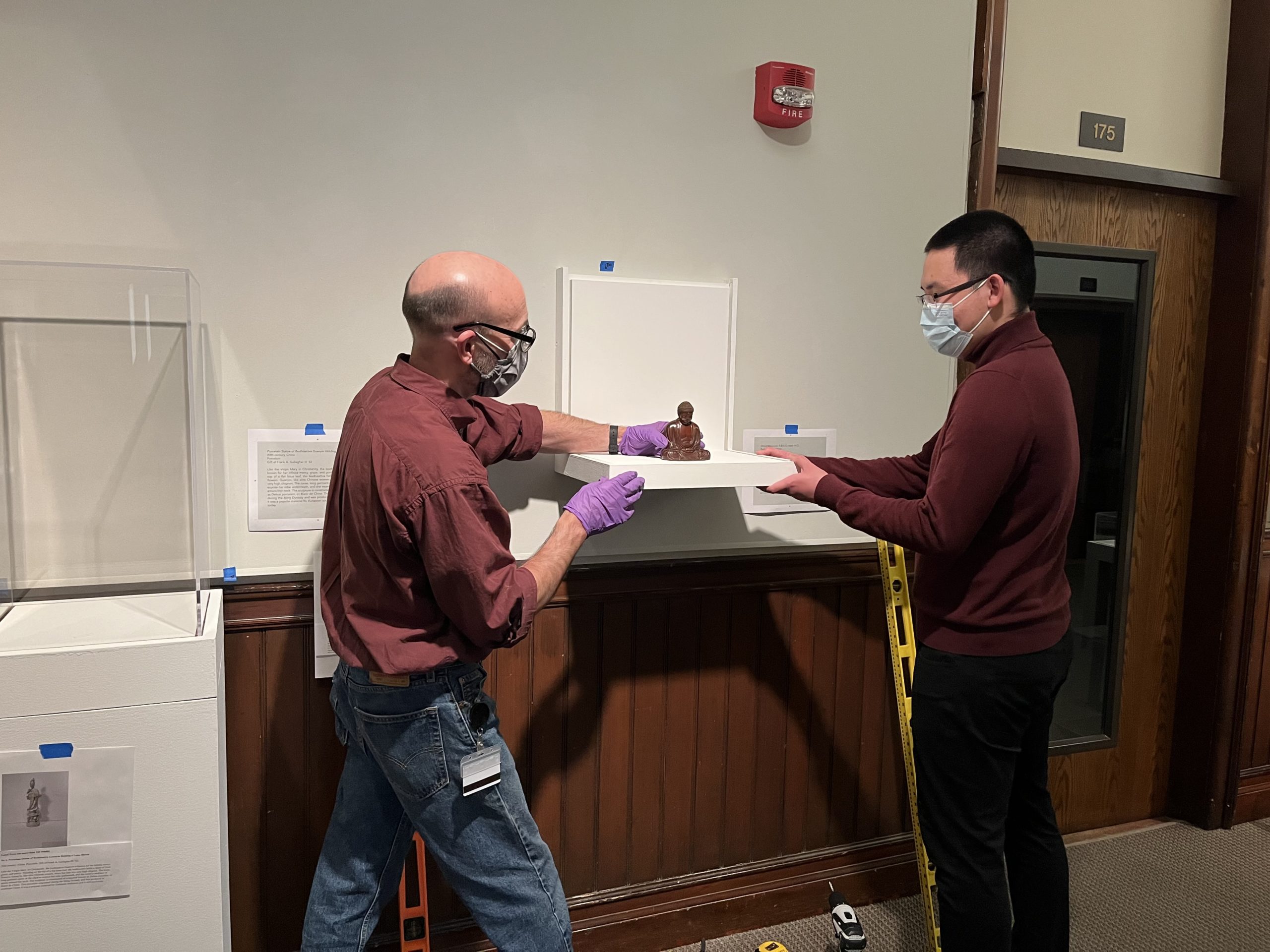
I was not discouraged when I reach these dead ends in my research. I would rather wade into the murmuring brook—despite being fraught with vagaries—out of sheer curiosity and exhilaration. I used my research as the foundation for an exhibit I curated for the Spring of 2021. For the first time, the gifts of Frank Gallegher ’32 were on display. I selected 10 of the 33 objects that were a part of his original gift, including the Guanyin and the Kimona Doll. At a time that the virus kept me far from my family for a long time, the Cantor experience familiarized me with collection research methodologies and professional curatorial practices, which inspired me to reconsider how the early modern world was intermingled, both artistically and commercially.
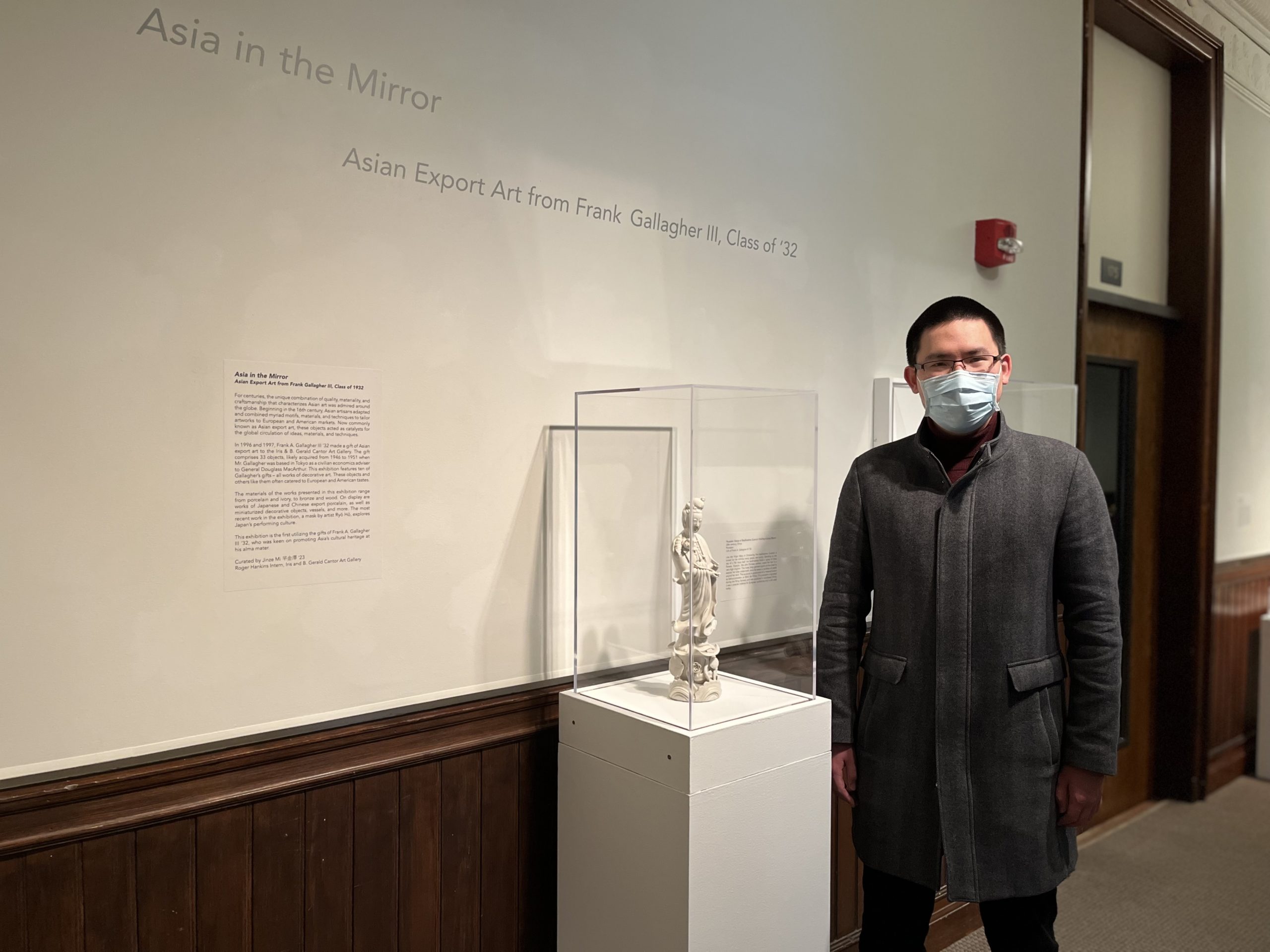
– Jinze Mi ’23
